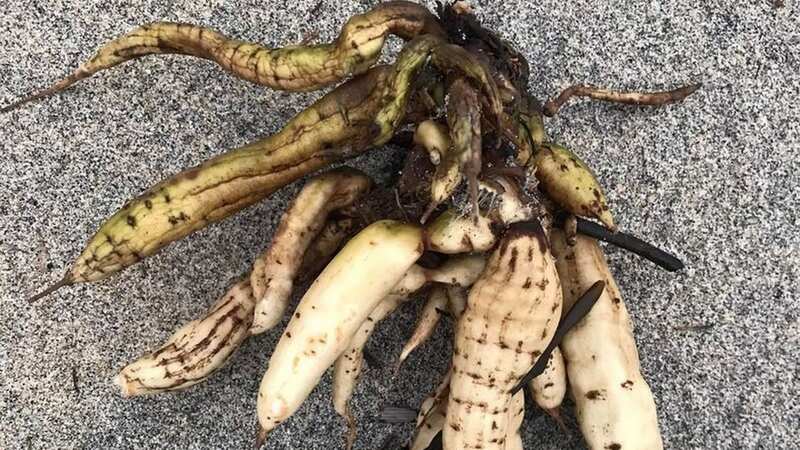Poisonous plant warning to dog walkers after toxic root found on UK beach

Dogwalkers have been warned to keep their pets away from a poisonous plant after its toxic roots were found on a beach in Cornwall.
Suzanne Dellamuro was taking a stroll at Carbis Bay on Sunday morning when she encountered a clump of white-coloured roots that look like puffed-up deformed beans.
Upon inspection, she found the roots to be hemlock - a highly toxic plant that can be fatal for animals and humans, even if ingested in a small amount.
The white roots, which look like a bunch of parsnips and smell like parsley, carry a deadly poison called oenanthotoxin.
For some people, even touching the plant may cause a painful skin reaction.
 Girl, 4, mauled to death in dog attack pictured as neighbours hear mum's screams
Girl, 4, mauled to death in dog attack pictured as neighbours hear mum's screams
 The plant is highly toxic to dogs (file photo) (Getty Images/iStockphoto)
The plant is highly toxic to dogs (file photo) (Getty Images/iStockphoto)The plant's alkaloids can affect nerve impulse transmission to the muscles, leading to respiratory failure.
Common symptoms of hemlock poisoning may include: trembling, burning in the digestive tract, increased salivation, dilated pupils, muscle pain, muscle weakness or muscle paralysis, rapid heart rate followed by a decreased heart rate, loss of speech, convulsions, unconsciousness or coma.
Suzanne said she picked up the plant and disposed of it while wearing gloves.
She posted a picture of the roots in a bid to help others identify the plant, writing: "Beware, hemlock roots found on Carbis Bay beach.
"I picked it up with gloves and disposed of it. But be careful it’s very, very poisonous."
Earlier this year, the RSPCA issued a warning to dog owners over the plant after one pet was killed and another almost died in Cornwall.
 Carbis Bay in Cornwall, where the deadly roots were found (Greg Martin / Cornwall Live)
Carbis Bay in Cornwall, where the deadly roots were found (Greg Martin / Cornwall Live)The charity said: "It is known to be highly toxic to dogs and can cause convulsions and may be fatal.
"We'd always advise owners to be observant when out walking with their dog."
In July last year, a toddler was rushed to hospital after taking a bite out of a hemlock plant while playing in his garden near Dereham, Norfolk.
He was urged to spit it out straight away but his concerned mum called 111 just to make sure, given that it was likely he had swallowed some of the small-sized flowers.
 Vets' warning over deadly Alabama rot after beloved Labrador dies from disease
Vets' warning over deadly Alabama rot after beloved Labrador dies from disease
He was then rushed to A&E where he was looked after for about five hours.
"The doctor told us if he had swallowed the whole thing, within two or three hours he could have ended up with paralysis or in cardiac arrest," mum Megan, 28, told the East Anglian Daily Times.
 Earlier this year, the RSPCA issued a warning to dog owners over the plant (file photo) (Getty Images/EyeEm)
Earlier this year, the RSPCA issued a warning to dog owners over the plant (file photo) (Getty Images/EyeEm)To avoid a repeat of the near-fateful incident, her partner, known as Big Richard, got rid of all the remaining plants from the garden.
And last May, a six-year-old's entire eye, ear and face became swollen with a blistery rash as she suffered a bad reaction to the plant.
Hemlock Water Dropwort is a member of the Umbellifer family and is normally found in ditches, damp meadows, in streams, by riverbanks, and in marshes.
It is a large, stocky plant between three and five feet high that flowers in July.
The lower stem is usually thick and joins clusters of fleshy tubers that give rise to the popular name “dead man’s fingers”. The entire plant is poisonous.
According to medical website Healthline, the roots of poison hemlock can easily be mistaken for wild parsnips, while the leaves can be mistaken for parsley, and this is the primary reason for accidental poisoning.
Poison hemlock is often found on roadsides, in waste areas, and near fences.
Read more similar news:
Comments:
comments powered by Disqus

































